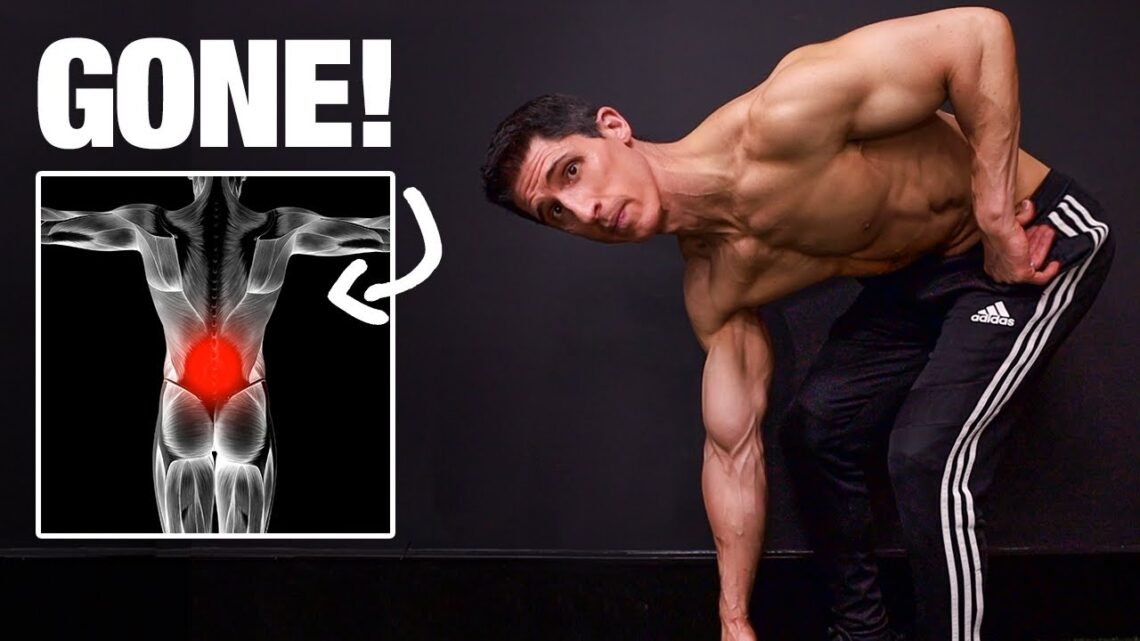
Fix Back Pain by Doing This (EASY!)
September 11, 2021If you want to fix back pain that you get on a regular basis, then this might be one of the most important videos on lower back pain that you watch. It is quite common for us to experience pain and tightness in the low back, sometimes from even the slightest of movements. Whether it is caused by a muscle strain or a disc, the problem is often rooted in an accumulation of bad spinal mechanics that results in what seems to be a sudden blowout.
This is almost always not the case.
When it comes to low back pain, too often it is our posture when bending forward and the accompanying weakness in our lower back muscles that sets the stage for problems. Whether it is being too lazy or ingrained habits of poor hip biomechanics, if you don’t hinge properly you are going to put excessive strain on the low back that doesn’t have to be there.
Let’s take a test.
If you had not watched this and dropped a pen on the floor, how would you pick it up? Do you just bend forward at the waist and reach down to grab the pen. When doing this, is your low back rounded? Are you reaching out in front of your body so that your arms are drifting forward when you do? If either of these happen, you are likely joining the 90 percent plus that picks things up this way.
It doesn’t matter that the pen only weighs a few ounces. It’s almost never about the weight of the item you are picking up that results in back pain. It’s about the mechanics.
Bending must always start at the hips with a hinge backwards. In fact, very little knee bend is required to get you to the ground once you’ve fully hinged through your available range of motion at the hips. By hinging, you not only set the stage for proper biomechanics of the hips but you preload the muscles of the glutes to do the lifting for you rather than the weaker paraspinal muscles of the lower back.
Your glutes are the powerhouses of hip extension. You need to learn how to use them.
To do this properly, I highly recommend that everyone includes the RDL into their training regimen. Even though this shares many of the same characteristics as the conventional deadlift, it is a different movement that is driven entirely by the posterior chain throughout the lift. The deadlift has a large knee extension moment at the beginning of the pull from the floor. It isn’t until the bar gets to the level of the knees does the movement shift from a quad dominant leg exercise supported by upper body pull musculature to a hamstring and glute dominant leg exercise supported by the upper body.
With the RDL, you want to start the movement from the standing position rather than picking the bar off the floor. Ideally, you’ll have a rack that will allow you to do this however you can prop the bar up onto a bench if needed to get it off the floor. From here, you take a grip just outside of your legs. Initiate the movement by hinging back at the hips.
Imagine there is a dresser drawer behind you and you are trying to close the open drawer with your butt. If you do this right, the bar will simply ride down your thighs and past the knees, without the lower back excessively arching or arching in a different plane than the mid back.
Allow the bar to drift past the knees, placing a big stretch on the hamstrings. At no point is the lower back leaving it’s fixed stable position to flex or extend the weight back to the top. The glutes and hamstrings are driving the pelvis forward in order to power the movement.
With these muscles of the posterior chain much better equipped to handle these loads and this function, you will find that the action of bending down becomes much more efficient and easier to perform without the risk of strain on the weaker lower back muscles. Back pain that could arise from an accumulation of poorly performed forward bends will become a thing of the past if you learn to groove this pattern.
It doesn’t just help here either. This movement is critical to performing a deadlift, squat and row properly as well.
You don’t have to keep dealing with every day low back pain. Learn to strengthen the muscles of the glutes and hamstrings via the RDL and then let that carry over into your daily functional tasks that we take for granted, like bending over to pick up a pen off the floor.
If you find this helpful and are looking for a complete plan to build a strong low back without back pain, be sure to visit athleanx.com and check out the program selector tool via the link below. All of the workout plans are created by a physical therapist with a mind towards creating safe workout programs that build strong muscles while bullet proofing your low back.
For more videos on how to fix back pain and the best low back exercises for building a strong back, be sure to subscribe to our channel here on youtube via the link below. Remember to turn on your notifications so you never miss a new video when it’s published.



